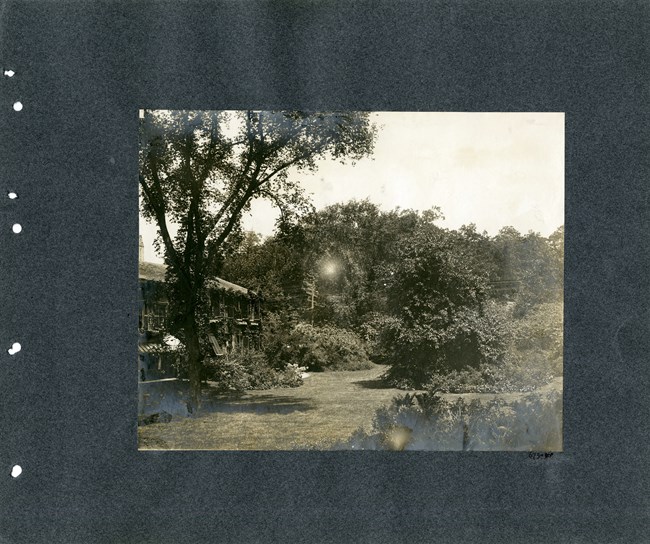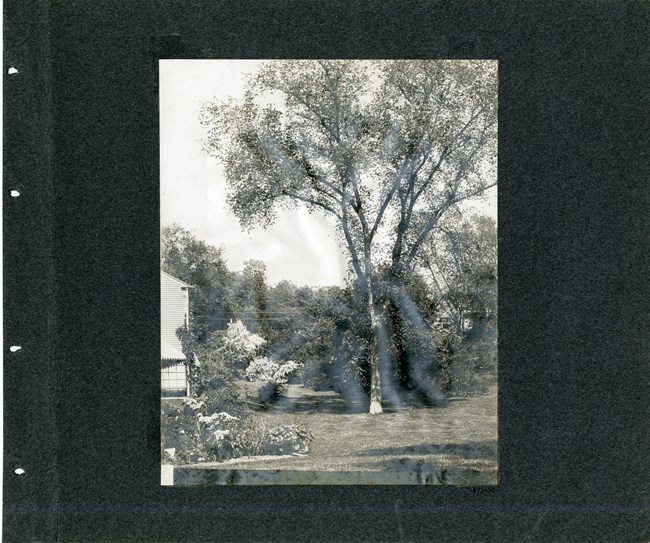Part of a series of articles titled Echoes of the Olmsted Elm: Works from the Rhode Island School of Design Witness Tree Project.
Article
Echoes of the Olmsted Elm Charlie Pepper Essay

Olmsted Archives
When I arrived at the site on that first morning my boss introduced me to the job; he casually introduced me to my responsibilities of keeping the grass mowed and leaves raked. Then, as we approached the Olmsted Elm, his tone changed, he became very serious. As we stood there beneath the tree canopy, he ominously described how caring for this tree was the most important detail of my job. While listening, I clearly remember my eyes glancing upward along the trunk to the limbs and outward to the branches and leaves. “Wow” I remember saying to myself, “this is a cool tree!”
I soon learned about the Olmsted Elm’s history: how it predated Frederick Law Olmsted’s purchase of the property and his decision to retain it as a focal point in the landscape; its’ bouts with, and recoveries from, fungal infections, pest infestations, hurricanes, and site construction; how it had been used by the Olmsted Firm to develop new ideas in tree care practice such as field testing a mast-and-boom contraption that was later used for controlling Leopard Moths on the elms in Boston Common. The hooks, spikes, nails and other hardware remaining in the trunk and limbs reinforced the written record and photographs of how the Olmsted Firm and family interacted with the tree.

Olmsted Archives
The Elm and I maintained our relationship for over twenty-five years. While others took on the responsibility of its direct care, I often helped with correcting problems of health and deterioration. As the elm aged and more aggressive care was needed, I continued to assist with monitoring its condition and recommending appropriate treatments to sustain health and maintain its dignity as a recognized icon in a nationally significant landscape.
When the stability of the tree diminished to the point that limb failure threatened personal and property damage, I reluctantly accepted that it was time for removal. The morning that it was scheduled to be taken down I went to the Elm to say goodbye. I stood very much in the same spot as the day we first met. I studied its characteristics, touched and traced the bark with my hands, took note of the remnant hardware left in place by the Olmsteds, marveled at the size of the trunk, heavy limbs and arching branches. I took it all in for the last time. As the arborists began approaching the tree to begin their work, I said goodbye and turned to leave. I turned back, one last look, and said “Thank You.”
Charlie Pepper
Senior Project Manager
Preservation Maintenance & Education Olmsted Center for Landscape Preservation
Last updated: April 8, 2022
